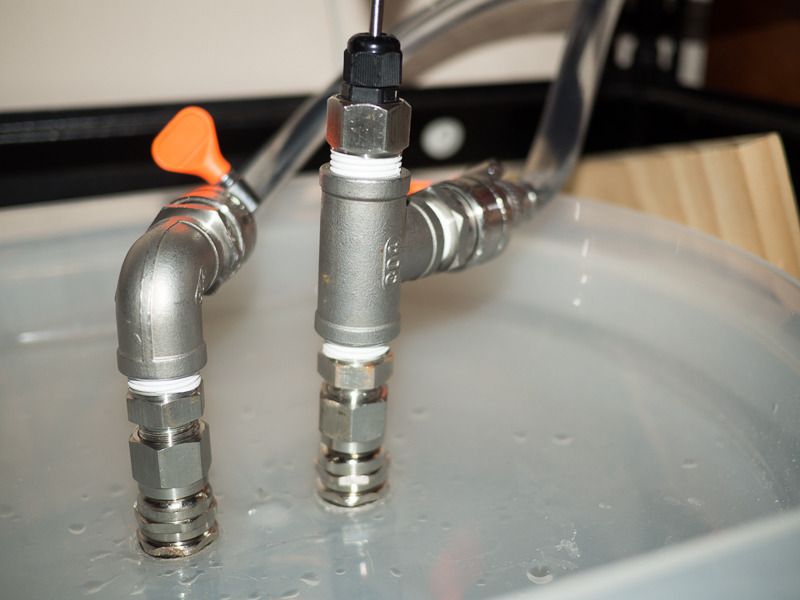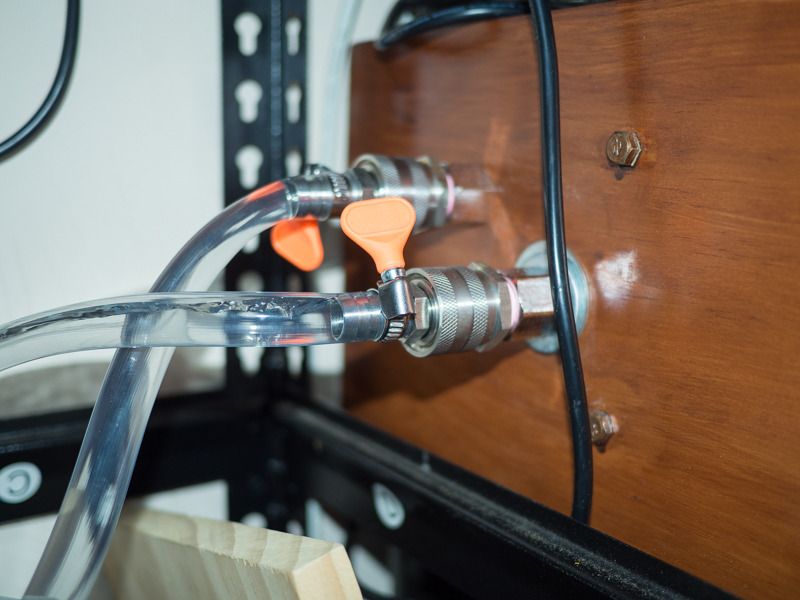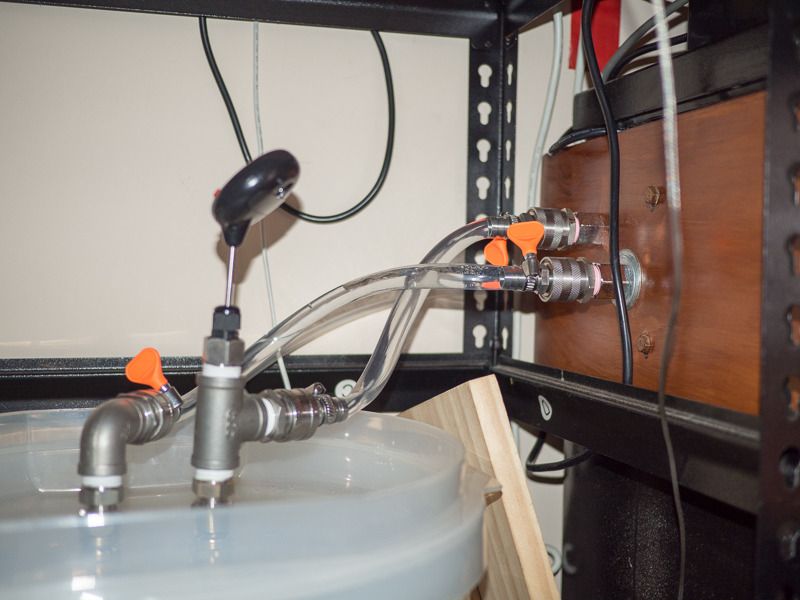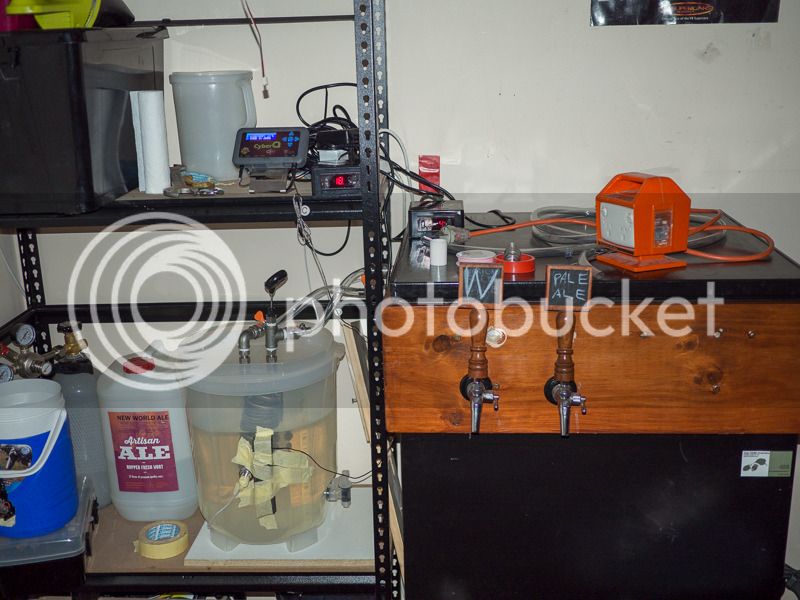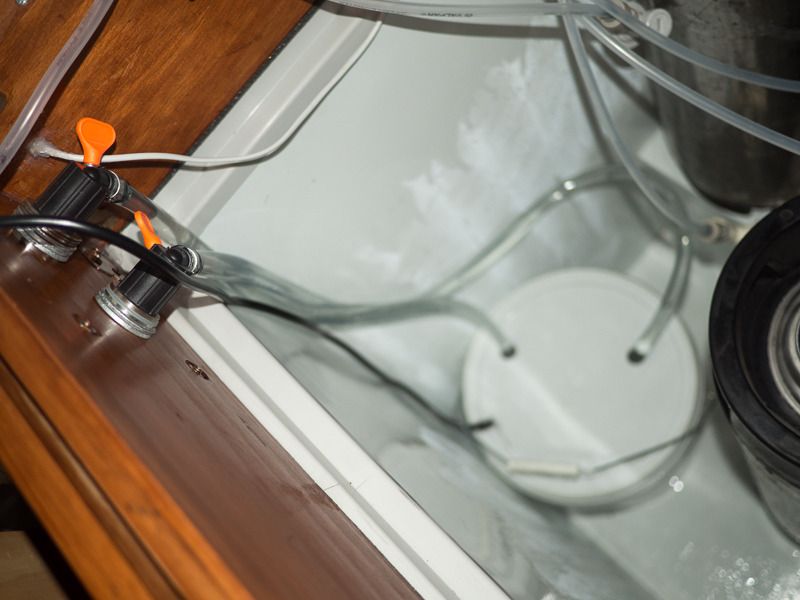Holy quotes! I will say I missed one thing, I thought there was a coil in the bucket inside the keezer. There isn't, it's only a pump, so replace
...with...
'Set up a fan blowing across the bucket'
It wasn't an attack at your credibility, there is an unknown you aren't considering which means the heat equation isn't the be-all and end-all. I didn't say negative 4°C in the keezer, I said 4°C. The heat equation you've stated is for a closed system because there is no Q input or output. There is no consideration there for convections rates and coefficients.
Again, I'm always happy to have a discussion and it's never offered as a personal attack. I get irritated when debate and sharing of ideas turns personal, so understand that's not what I'm doing if I point out errs.
As to your statement above, it really makes no difference if you meant -4C or 4C as the temperature by itself is an arbitrary number without also knowing mass and specific heat. If you want to solve for Q then you must have all of these. You are very correct that I only solved for thermal equilibrium within a closed system and that's because it's the ONLY thing in this system that can be easily solved for. I have no idea the thermal conductivity of plastic or even a stainless keg as there are many many variables involved. This is where engineering meets science. Instead of trying to solve for HEX rates within the reservoir and FV, I'll find out what my goal is and then do everything reasonably possible to make reach it. That's why I suggested insulating the fv and having a metal reservoir with a larger volume and surface area. I also suggested a fan across the bottom of the keezer to move the air because I don't want to rely on natural convection to transfer heat. Air is a poor medium so we must make the best of it.
What it says is (and yes you've already said this, not being patronising) -
- Body 1 has a certain amount of heat energy which is transferred to body 2 heat always moves from higher temperature to lower temperature.
- Body 2 has a certain amount of heat energy which is transferred to body 1
- The amount that transfers between each is the same, and the temperature settles to equilibrium. yes - one gives up heat and the other receives until equilibrium.
This say nothing of the continual heat transfer between the fermenter and the ambient air, and between the cooling water and the fridge air.
What happens if the keezer is turned on and remains on?
You'll eventually freeze your kegs and have huge beercicles
What happens if the heat transfer convection coefficient is improved to the surroundings in the freezer?
I would suggest forced convection for air-flow inside the cabinet.
What happens if we insulate the fermenter?
You have to in order to create a high ΔT across the fermenter to ambient. If you didn't, you would quickly outrun the capacity of your chiller vessel and likely your keezer itself.
We want to reduce the rate of transfer between the fermenter and surroundings (28°C) and increase the rate of transfer between the cooling water and the keezer (4°C).
Exactly
Reduce transfer between fermenter and surroundings - insulate.
Yup
Increase transfer between cooling water and keezer air - a radiator with 4°C air blowing past it (in the case a coil with fluid pumping through it) will have far better heat transfer than a bucket/keg full of water sitting in a still environment. The limiting factor is the heat transfer convection coefficient between the cooling water and the thing cooling it, the cold air in the freezer.
This depends on how complicated you want to make your system and how much capacity you have in your keezer (which likely has a natural convection evaporator) I'd rather to slowly lower the temperature of a larger volume of water in the keezer as a capacity reservoir. This is an open loop system with a submerged pump. Simple. You close this tiny system and you open a can of worms with thermal contraction, air locking and purging not to mention a more expensive in-line pump that you have to trust not to blow a seal and fill the bottom of your keezer. Plus in periods of high demand, you have no reservoir to buffer the cabinet temperature and your product temperature may rise. As a process, you will likely only have two periods of time that you will have a high demand then the rest of the time will be of relatively low demand. The metal bucket (or spare keg) is perfect for this application.
There are better methods after the initial chilling has taken place than placing the bucket in a keezer, keeps fluids (air and liquid) moving is one of them.
You forgot about the cold crash.
